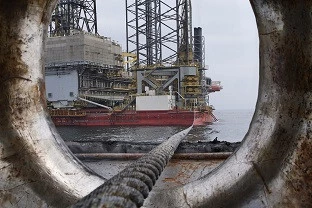Taking a strategic journey from a tag- to asset-based data ecosystem to enable remote operational support
Following on from his first blog of the series, OSIsoft’s Craig Harclerode returns to offer his advice on overcoming the challenges facing operators pivoting to remote operational support
Add bookmark
As discussed in the first blog in this series, many industrial operators continue to face a disparate, tag-based ecosystem of operational data, which is limiting their ability to pivot to remote operational support. Such companies often rely on individual spreadsheets and tag-based, custom applications and solutions supported by a plethora of IT developers and/or system integrators.
To quickly pivot to be able to offer effective remote workforce support, operators must move beyond disparate tags and adopt a standardized data model approach for managing their OT data. To empower your subject-matter experts (SMEs) with insight-rich information that they can access remotely, you need data that is normalized and contextualized.
The key to success is unifying disparate sources of real-time data and enriching that data with multilayered context from inside and outside of the control system. Without a data directory based on an enterprise asset hierarchy, the further away your SMEs are from their equipment, the less meaningful the data, which often follows local, plant-specific tag naming conventions. In short, there is a lack of context with tags.
Using the data model in Asset Framework (AF), the contextualization layer of the PI System, you can accelerate your company's digital transformation by combining asset data into a digital replica of your physical assets, which acts as an operational “chart of accounts” for sensor-based data.
There is no real corollary for operational data to the financial chart of accounts that each public company must use to chart assets, liabilities, equity, revenue, and expenses. Required by General Acceptable Accounting Practices (GAAP), this financial chart of accounts provides a normalized, consistent, single version of the truth for access to financial information. When a company acquires a new company, there is a necessary effort to abstract, normalize, and integrate financial data into the financial chart of accounts.

For operational data, AF enables a similar chart of accounts by transforming strings of measurements into value-rich, critical information. Many industrial companies are well along into their strategic journeys to support their migration from a tag to an asset-based ecosystem. Such companies leverage AF to abstract a diverse, tag-based ecosystem from DCS, SCADA and other data sources into a consistent, unified data hierarchy of assets, categories and attributes that can provide different views into operations across the whole enterprise. This contextualized access to asset-based information allows operators to quickly pivot to remote operations by empowering SMEs with organizational, system and asset-level views into their equipment.
To achieve such an operational chart of accounts, it is critical to be able to integrate other data types, such as metadata from a maintenance management system, or static data such as lat/long, or safe operating limits. This chart of accounts in AF also enables the creation of “rich data” like efficiencies, run times and performance information. Additionally, AF can be used to capture SME knowledge and experience in rule-based expressions. The SMEs have the ability to configure, in an agile, evolutionary way, their knowledge and experience into expressions and logic.
In summary, the ability for companies to pivot to effective and efficient remote operational support is directly correlated to where they are in their journey from a diverse tag to an asset-based ecosystem and the maturation of their operational chart of accounts.
To learn more about remote oil and gas operations, watch the on-demand webcast here.























